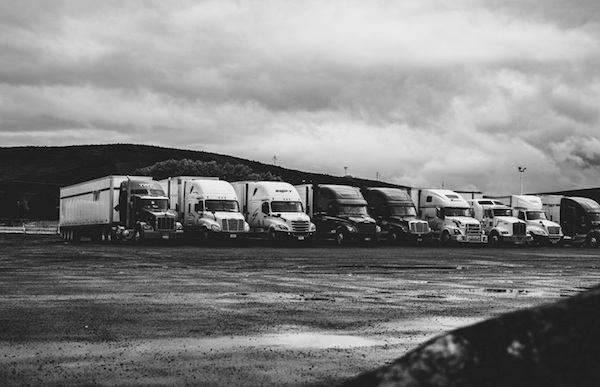
Starting a truck driving business can be stressful and overwhelming, as you have a myriad of problems that you have to solve before they become a crisis. Among them are licensing fleet insurance, compliance matters at both the state and federal level, a plan to make money, and a plan for overhead to keep your business afloat. Drivers are part of your overhead, and that includes safety plans and protocols.
The list feels never-ending. We’ve cut it down to the following 7 critical tips you need to start your own thriving truck driving business.
1. Plan Your Business.
Your truck driving business has a better chance of thriving when you have a good plan. As the owner of a truck driving business, put everything in writing for yourself first, and make a plan for every plan.
Your plan needs to include who the owner and operator is, and you can name yourself. It also needs to include whether you a short-haul or long-haul trucking business. You also need to plan and decide if you are purchasing trailers or leasing them.
On the money side of things, you want to make a forecast for your business. What are you investing, how are you getting that, what will your costs be after that, and how will you make your revenue.
Each of these elements along with your state and federal requirements will need to be planned.
2. Funding Initial Operating Expenses.
Your initial overhead costs are going to be your first major concern. You have to start your trucking business with an investment. You can expect your investment to be approximately $10,000 to $30,000 if you are starting small. This will cover your vehicle or vehicles, insurance, down payments, rent, and any permit or state expenses.
You can seek financing or investors, or take both routes. If you have some cash saved then you will have a good fresh start to your business. Financing options can include a credit line, a bank loan, properties, and your own savings.
3. How Will You Make Money.
You will need to have a plan for bringing in revenue. This will start with a marketing plan where you will spell out how you will get your clients and customers. Then, you will have to create a plan that will spell out how the income is coming in.
Typically, revenue in a trucking business is calculated by rates per mile. The rate must be high enough for you to have your expenses covered and also for you to profit. You also need to have a competitive rate for your shippers.
Things you will need to know to calculate this rate are your freight lanes and load boards. You’ll take an average of the loads going in certain directions, and then add a markup of 10 to 15 percent. The same process is followed in the opposite direction.
4. Handle Your Legal Requirements.
When you have a trucking business, your legal requirements are miles long. You will need a valid commercial driver’s license (CDL) for each driver. Permits from the United States Department of Transportation are required, as are Motor Carrier (MC) authority numbers.
Your business must be registered with Federal Motor Carrier Safety Administration (FMCSA) and must have the Safety Certification Application and the Motor Carrier Identification Report (MCS-150).
5. How to Buy or Lease Trucks.
You can have the best drivers in the world, but the trucks are the mainstay of your business. You need to know how to get the right ones, and how to get the right ones in your budget. That said, commercial motor vehicles are easier to purchase over personal vehicles due to the many corporate advantages you have to save in costs and taxes.
For a motor vehicle, quality is a better priority over costs. If you have to choose between buying many medium-quality trucks, over a few excellent ones, start your business with a few excellent trucks. This saves you in operating costs down the road, or at least it will put maintenance and repairs off for the long-term.
When you are looking at trucks, take your time checking for body damage and check the entire vehicle. Look for rust points, or points where it could start. You also want to take note of the tire tread and the mileage of the vehicle. Get a log or see what you can find on the oil history and maintenance of the vehicle.
If you can get any records on accidents, that is good for your files as well. Gather quotes on many different vehicles and make your decisions from there.
6. Fleet Insurance.
Truck insurance is mandatory for any truck on the road, and the requirements are more expensive when you run a fleet. Fleet insurance is critical, and you will need liability insurance as a minimum. This will cover the costs of bodily injury and property damage to other parties in the event that one of your drivers is in an accident.
You will want coverage for them as well. Workers’ compensation coverage will cover that, but you also want to have your policy as thorough as possible.
7. Have a Management System.
When you own a trucking business, all of this is going to feel overwhelming. Hire managers. In addition to being owner and operator, hire managers for your business. Have one for the office, one for the vehicles, one for the drivers, and one for every department where you can afford one.
Have a Plan.
To run a thriving trucking business, you need to have a plan. Then, have a plan for every plan. Handle your legal and fleet insurance requirements. Know how much revenue you are making, or how to make it, and how to cover those costs. Then, have a management system in place to make sure it all goes your way. Good luck!
via https://www.AiUpNow.com
November 19, 2021 at 12:33PM by admin, Khareem Sudlow
